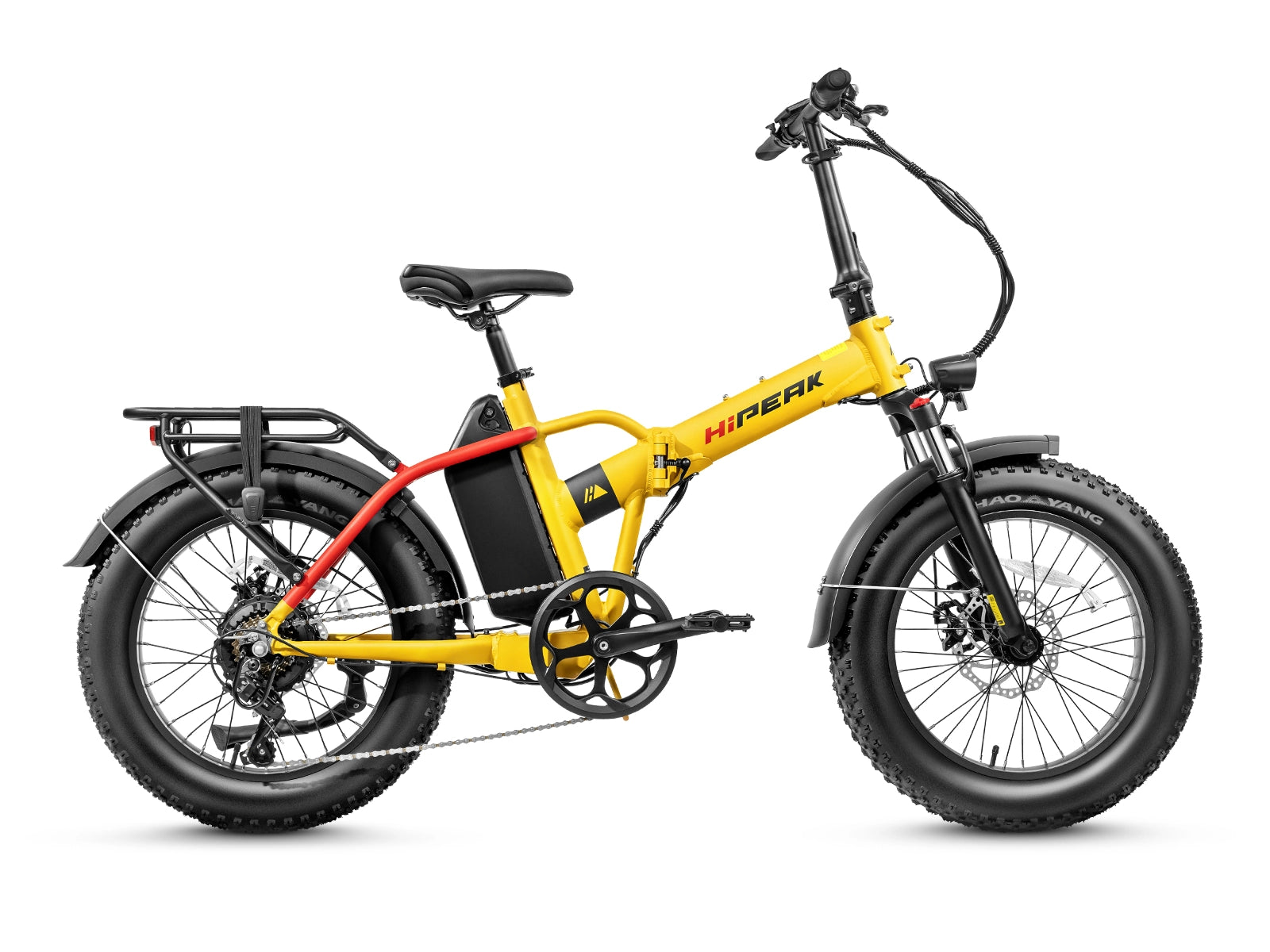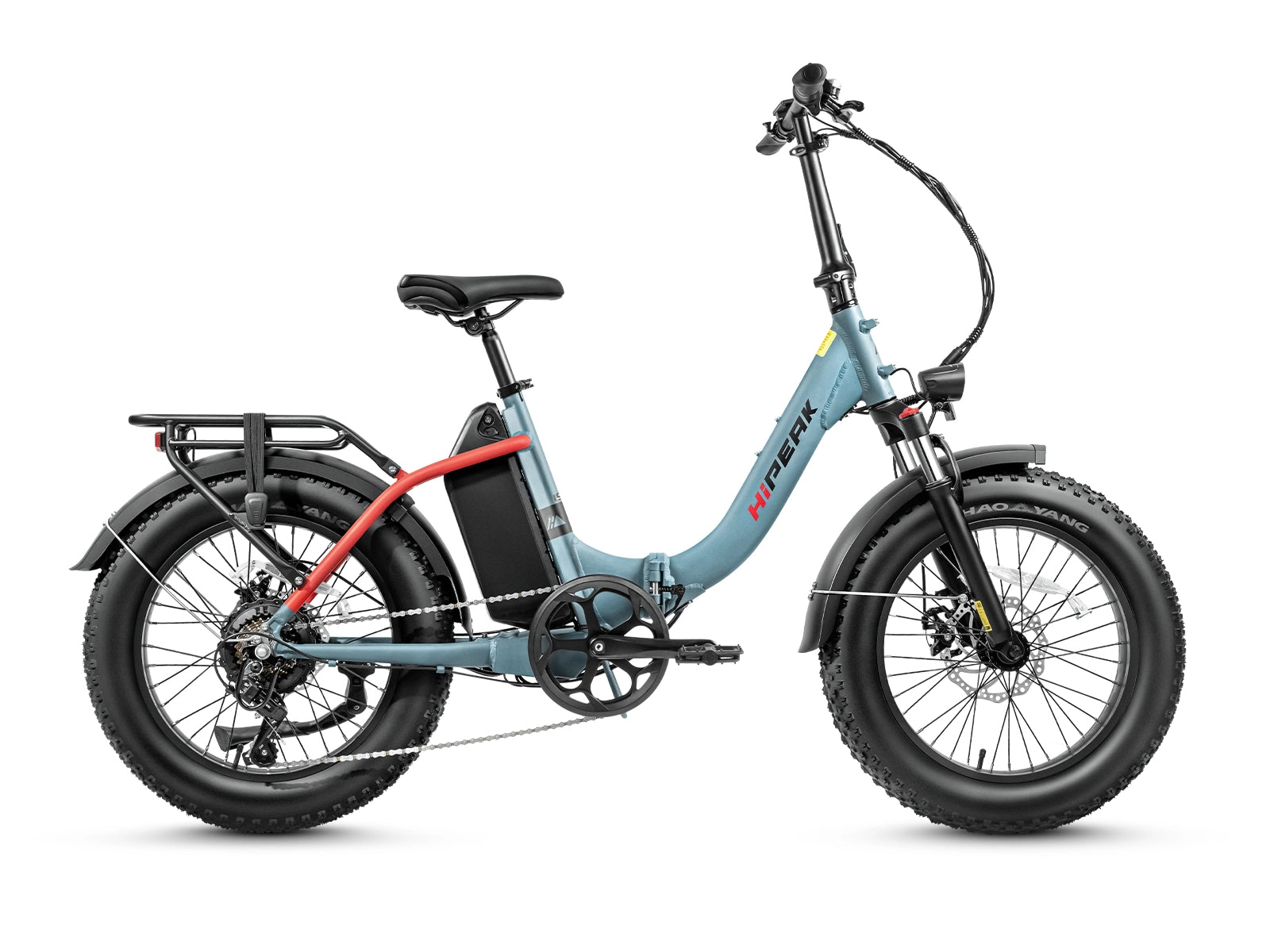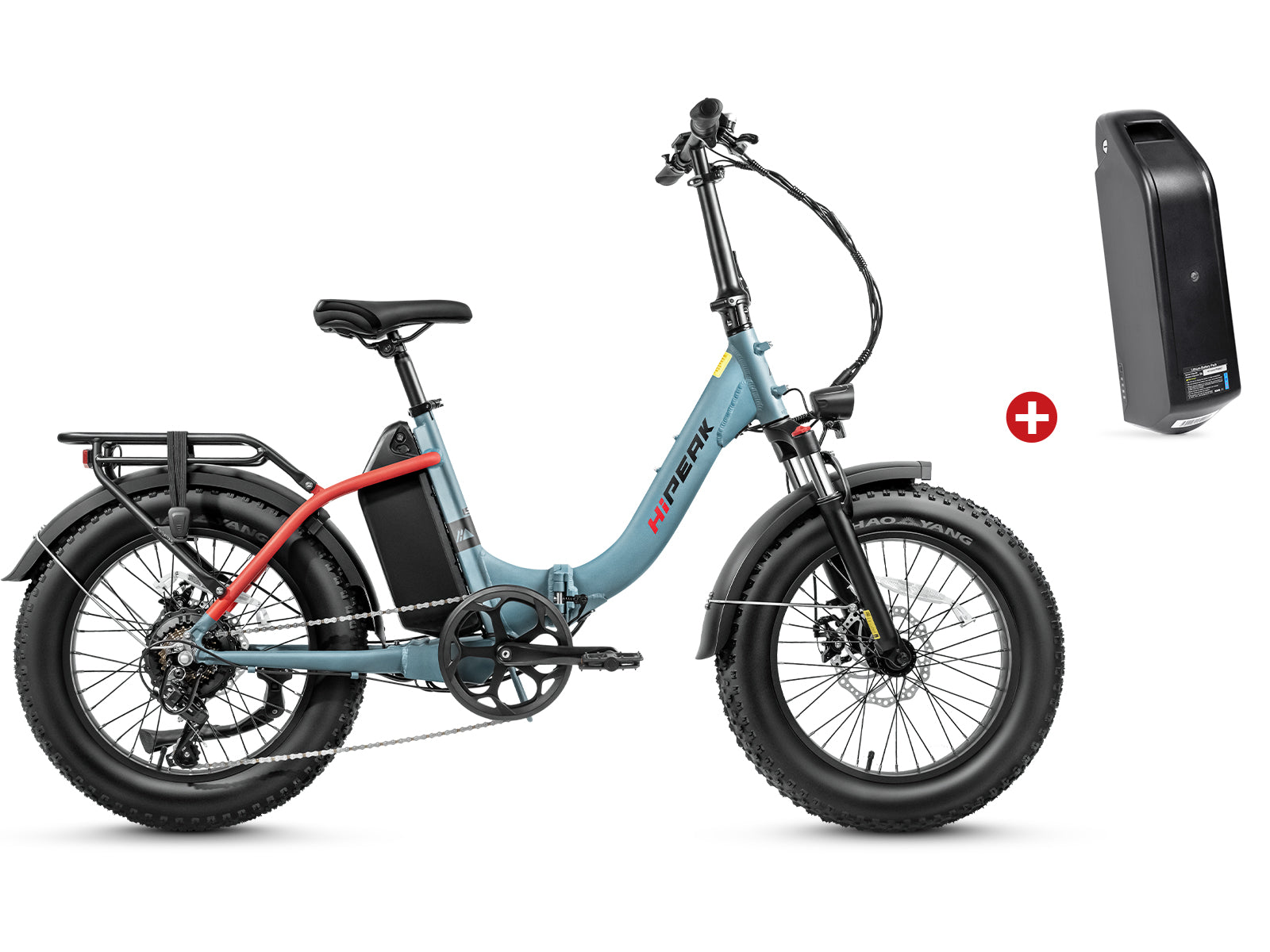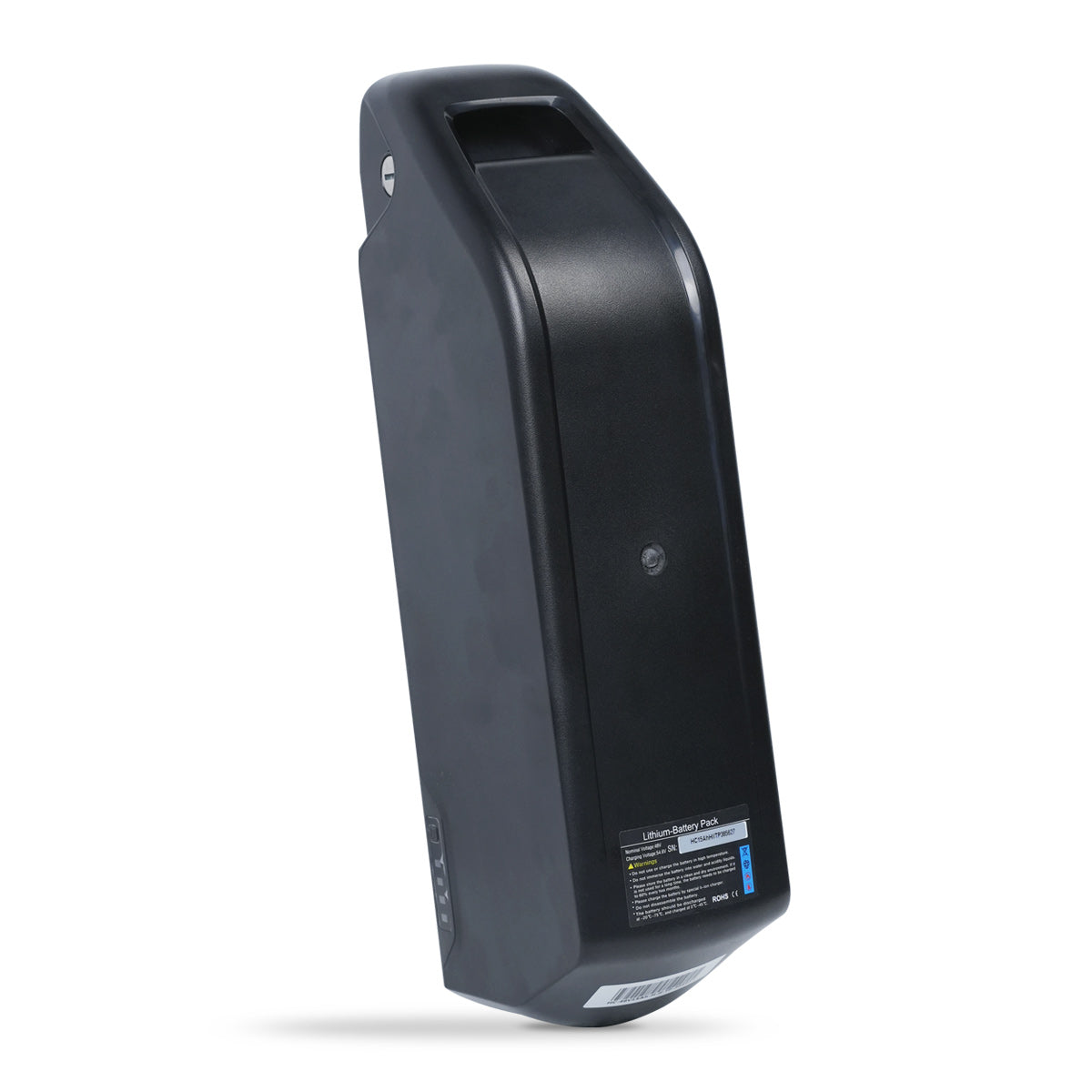How To Fix an Electric Bike Fat Tire?

You're out riding when suddenly, your ride becomes extremely slow; the effort you put into pedaling doesn't seem to have much of an effect, and even the engine seems unimpressed by what's going on. You may have never had a flat tire on your bicycle before, but you may sense the sinking feeling that comes to you when your tire goes flat beneath you. Something has deflated the bubble of fun you were carrying around.
You should always be prepared for the worst, and flat tires (also known as punctures) are the most ride-spoiling occurrences that can happen to anyone. Thank goodness, flat tires (well known as perforations) on your eBike are not a common occurrence; however, you should always be prepared for the worst.
In this post, we will discuss everything you need to have prepared in case a puncture occurs and how to fix a punch in your e-bike in a step-by-step manner, as well as techniques and tools that you will use to avert punctures from occurring too frequently.
The Difference Between Fat Tires and Regular Tires
Changing a motorbike tire is equivalent to replacing any other bike tire. Everything else is the same or highly similar. Tires designed for eBikes are more robust than those designed for conventional bicycles. They're beefier to take the greater force of stopping and starting and the "heavier "'s weight without breaking. Due to their thicker construction, bike tires are much less likely to be punctured than standard bicycle tires.
Make Sure to Use the Correct Tools And Supplies
Tools for fixing a flat tire are among the numerous items that should form part of your standard eBike riding gear. You should always have them available, and a convenient place to keep them is in a compact bag that can be Velcroed to your handlebars or another portion of your frame. That way, their impact on you will be permanent. You don't want to be completely cut off from society & helpless.
If you get a puncture while you're out and about, you'll need the following items to fix it:
Kit for fixing punctures, including two tire levers, chalk or even a marker, coarse sandpaper or metal scrapper, and self-adhesive patches or cement & patches.
An inflation device, sometimes known as a "pump,"; maybe a hand-cranked pump or even a CO2 cartridge inflator. You never have to worry about running out of the former, but you must bring extra canisters. If you plan on transporting a CO2 pump, it is prudent to include a small hand pump in case you run out of refillable cartridges.
- Inner Tube Replacement: Larger punctures often can't be patched. In such cases, the sole solution is to replace the inner tube. Longer trips call for two, and you'll want to double-check that the inner tubes fit the size of your bike's wheels and tires.
- Ebike Multitool: A common bicycle multitool will do the trick here. If you don't have a combination wrench on hand, ensure the tool(s) you choose to have a fitting corresponding to the axle nuts in your wheels.
- Knife: If you need to cut any zip ties, a little knife will come in handy.
Replacement Zip Ties - for when you inevitably snip one.
Fat Tire Repair Method
Many bikes are available, each with unique features and specifications. The motor and its location on your ebike are the only essential factors to consider while changing a flat tire; otherwise, the process is identical to that of a traditional bicycle.
You can skip over the sections on detaching and reconnecting the motor if your bike has a mid-drive motor (mounted inside the bottom bracket between the pedals) or if your motor is in the other tire.
Remove the battery.
Turn off the electric bike and take the battery out (this makes flipping the eBike easier and the whole process much safer).
You don't need to remove the axle nuts to change tires. You can loosen them.
You may either loosen the axle bolts holding the wheels in place or use the fast-release lever. The tire must have some wriggle room. Look for the source of the puncture in the tire's tread and both sidewalls. If you find it, get rid of it so it can't cause trouble again.
Unplug the motor wires or round-thin steel brake rotors.
Before moving on, write down where the motor cord and zip ties are located. The cable's connection point to the motor, its point of entry into the frame, or a fast connector situated anywhere along the line would suffice. To detach most connections, you need only pull them apart. After taking the battery out of the motor, double-check that the trailing line is secured to the chassis using a zip tie. If that's the case, you'll need to sever these connections before taking the wheel off.
Use a tire lever
Insert the flat end of one of the tire levers from your flat tire repair kit into the space between the tire and the wheel rim. Twist it 180 degrees to the outside, bringing the tire up over the metal rims. The hook or groove is built into the opposite end of the lever. Just slip this over a wheel spoke to keep it in place.
Repeat the process with the other tire lever, positioning it a few inches from the one you just put up without hooking it in. You should instead wind it around the tire's circumference. The tire's bead will be pushed over and out of the rim. Grasp the whole bead and pull it over the tire's edge.
Make sure there is some air in the new inner tube
The inner tube may be taken out of the tire now. Remove the valve by inserting it into the hole in the rim & pulling it out. To locate the leak, air up the tube and look at it closely.
When Do We Need to Change the Tires?
If the tread in the middle of the tire has gone flat or any big rips in the material reveal the structural mesh underneath the rubber, it is time to change your tires. Most tires have a colorful rubber layer beneath the black rubber; thus, if this begins to come through while riding your bike, you should immediately stop and replace the tire. Cracking the tires is another potential consequence of storing the bicycle in direct sunlight. Before you go on your bike, you should check the sidewalls of the tires for any significant cracks that expose the structural mesh. If you find any, you should get new tires.
Conclusion
Fixing a flat tire for the first time could make you feel a little overwhelmed, but after a while, you'll realize that it's not that difficult. You will need the appropriate equipment, time, and patience to repair a flat tire. When you have finished it, you will have the feeling of having accomplished a great deal; each time you do it, it will become progressively simpler. Here's hoping that it won't be something you have to do too frequently!





















Leave a comment